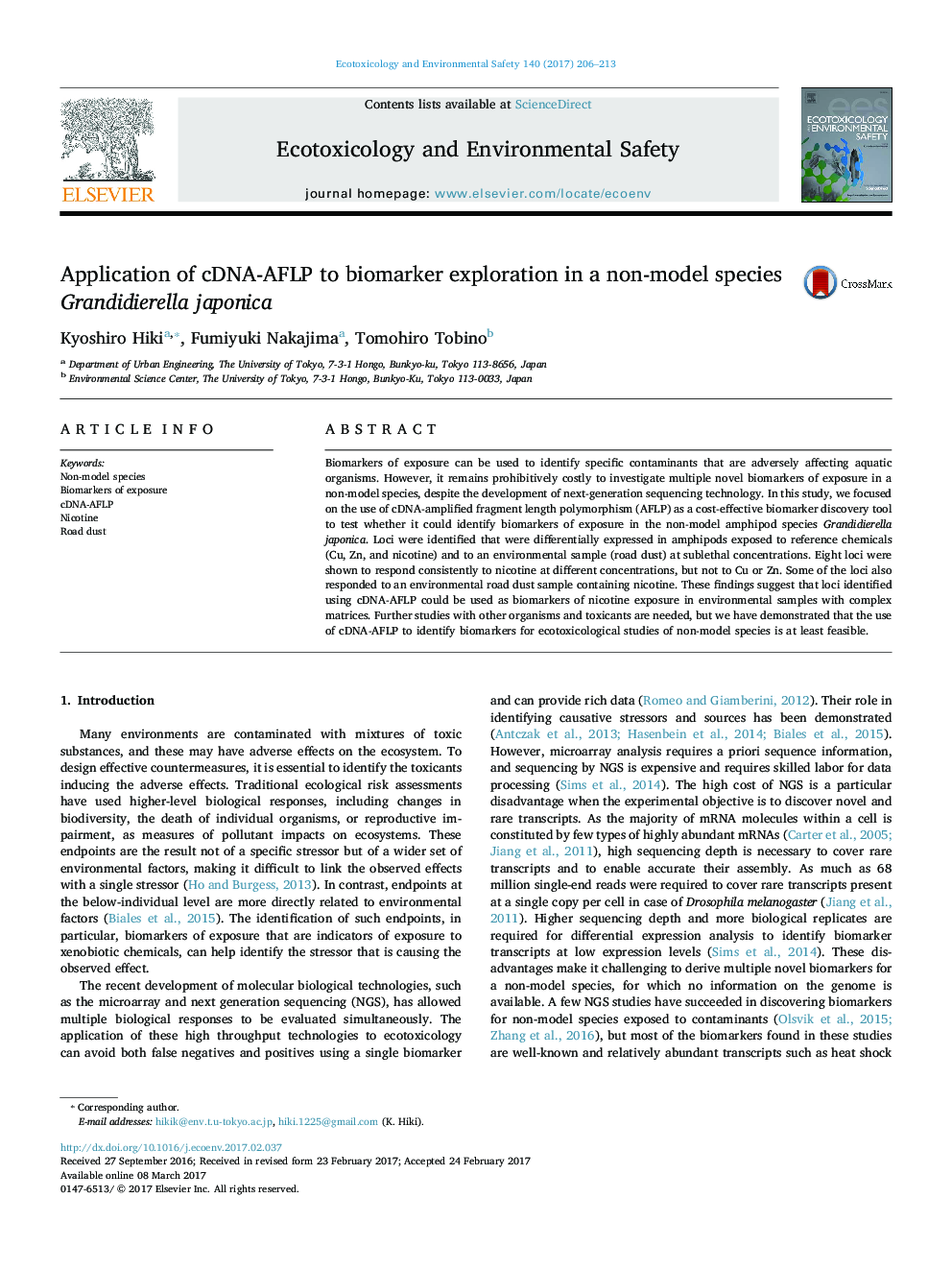| Article ID | Journal | Published Year | Pages | File Type |
|---|---|---|---|---|
| 5747681 | Ecotoxicology and Environmental Safety | 2017 | 8 Pages |
â¢cDNA-AFLP was applied to obtain chemical-specific biomarkers in a non-model species.â¢A total of 137 loci were differentially expressed for five types of contaminants.â¢Specific biomarkers for nicotine exposure were obtained.
Biomarkers of exposure can be used to identify specific contaminants that are adversely affecting aquatic organisms. However, it remains prohibitively costly to investigate multiple novel biomarkers of exposure in a non-model species, despite the development of next-generation sequencing technology. In this study, we focused on the use of cDNA-amplified fragment length polymorphism (AFLP) as a cost-effective biomarker discovery tool to test whether it could identify biomarkers of exposure in the non-model amphipod species Grandidierella japonica. Loci were identified that were differentially expressed in amphipods exposed to reference chemicals (Cu, Zn, and nicotine) and to an environmental sample (road dust) at sublethal concentrations. Eight loci were shown to respond consistently to nicotine at different concentrations, but not to Cu or Zn. Some of the loci also responded to an environmental road dust sample containing nicotine. These findings suggest that loci identified using cDNA-AFLP could be used as biomarkers of nicotine exposure in environmental samples with complex matrices. Further studies with other organisms and toxicants are needed, but we have demonstrated that the use of cDNA-AFLP to identify biomarkers for ecotoxicological studies of non-model species is at least feasible.
